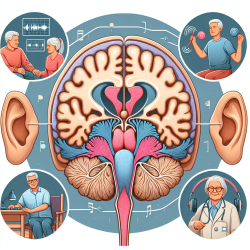As a practitioner dedicated to improving literacy outcomes for children, understanding the latest research can be pivotal. A recent study, Early Sensitivity to Morphology in Beginning Readers of Arabic, sheds light on how morphological awareness can enhance reading skills in young Arabic readers. This blog will explore key findings and practical applications to help you implement these insights in your practice.
Understanding Morphological Awareness
Morphological awareness refers to the ability to recognize and manipulate the smallest units of meaning within a language, such as roots and patterns. In Arabic, which features a rich non-concatenative morphology, this skill is particularly crucial. The study highlights that early sensitivity to morphological structure can significantly influence reading acquisition in children from Grades 1 to 3.
Key Findings from the Study
- Early Influence: Morphological awareness impacts reading ability from the earliest stages. Children read faster and more accurately when pseudowords are composed of frequent morphemes.
- Pattern Frequency: Pattern frequency plays a significant role in reading pseudowords, particularly from Grade 2 onwards. Frequent patterns facilitate better reading performance.
- Root Frequency: While root frequency did not show a significant impact on word reading, it influenced pseudoword reading, particularly in older children.
Practical Applications for Practitioners
Incorporating morphological awareness into your literacy programs can enhance reading skills in young Arabic learners. Here are some strategies:
- Focus on Patterns: Emphasize the importance of frequent patterns in your teaching materials. Use exercises that highlight common morphological patterns in Arabic.
- Interactive Activities: Design activities that require children to manipulate morphemes. For example, creating new words by combining different roots and patterns can be both fun and educational.
- Early Intervention: Introduce morphological awareness activities early in the reading curriculum. This early exposure can lay a strong foundation for future reading success.
Encouraging Further Research
While the study provides valuable insights, further research is essential to deepen our understanding of morphological awareness in Arabic reading acquisition. Encourage collaboration with researchers and participate in studies to contribute to this growing field.
To read the original research paper, please follow this link: Early Sensitivity to Morphology in Beginning Readers of Arabic.










